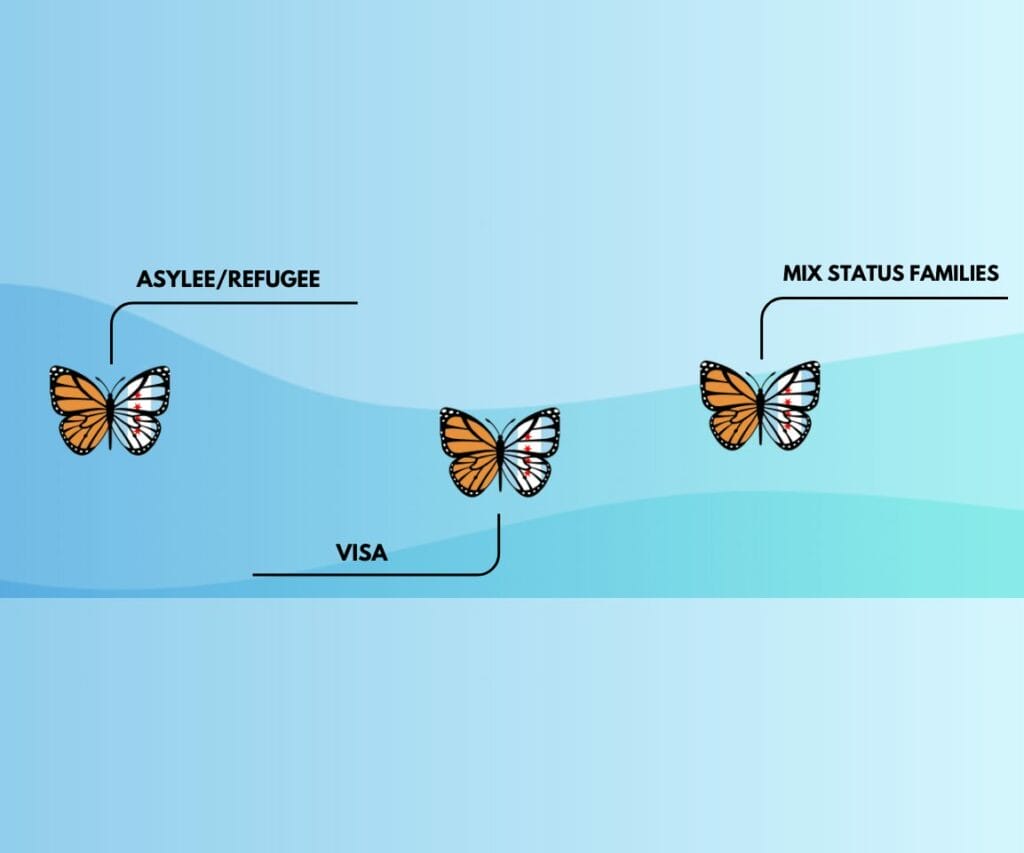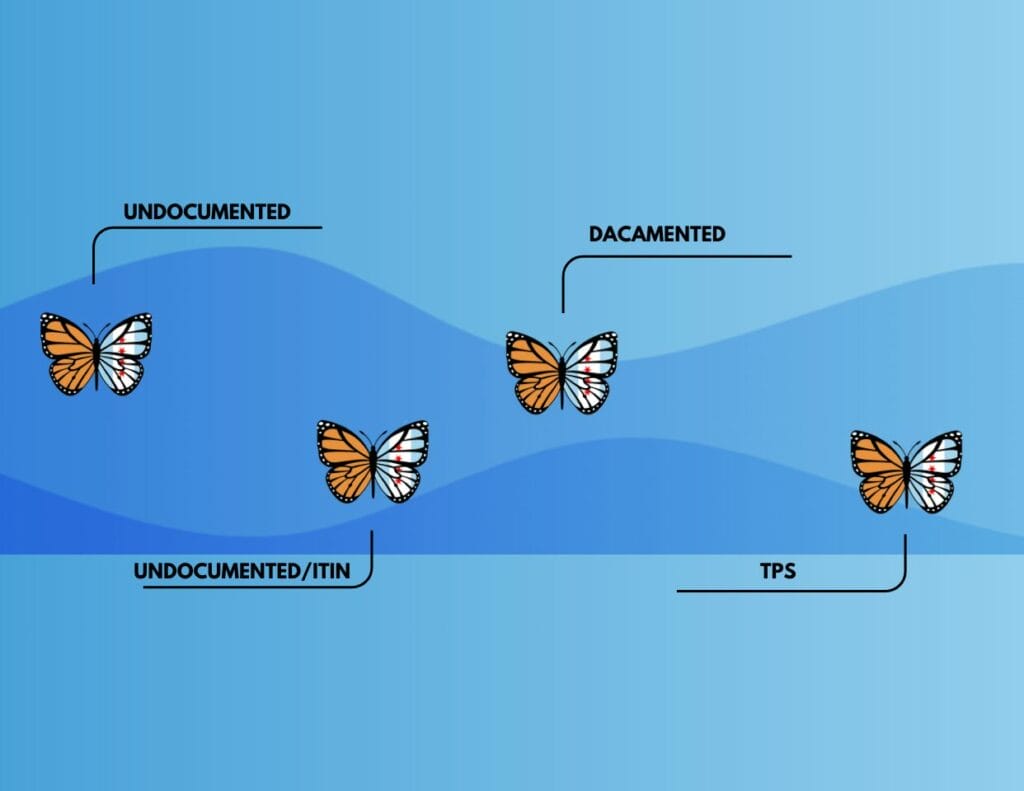
The Immigration Spectrum
Contrary to popular belief, not every individual in the immigration spectrum identifies as Latinx/e (or Mexican) or uses the term “undocumented” to describe themselves. The term “immigration spectrum” encompasses individuals ranging from fully undocumented to U.S. citizens who are part of mixed-status families.
Those in the immigration spectrum are from various countries and of all ages.
Here are some quick definitions to better understand the immigrant community
Undocumented
Born outside the U.S., and either entered the US without inspection and admission by immigration officials, or entered with permission that has since expired.
individuals with ITIN
Individual Tax Identification Number (ITIN) holders are people who have an ITIN because they don’t have, and aren’t eligible to obtain, a Social Security Number. May be, but not necessarily, undocumented. The ITIN itself confers no authorization to work.
DACA
Recipients of Deferred Action for Childhood Arrivals (DACA) are undocumented, but eligible for work authorization, an accompanying Social Security Number, and are granted deferred action (protection against deportation for being undocumented).
TPS
Temporary Protected Status (TPS) is granted to eligible individuals from certain countries where conditions such as war or natural disasters temporarily prevent safe return. TPS holders are eligible for work authorization and are deferred action. TPS holders must have applied within certain registration periods.
Asylee / Refugee
Those who have suffered or fear persecution based on race, religion, nationality, membership in a particular social group, or political opinion in their home country may be eligible to remain in the U.S. as an asylee. Asylees are granted work authorization, and may apply for permanent residence after one year.
Visa
Citizens of other countries who seek to travel to the U.S. normally must obtain a visa before arriving, which gives permission to enter the U.S., and shows how long and under what circumstances they may remain. There are dozens of types of visas, including employment-based visas, student visas, tourist visas, visas for victims of criminal activity and human trafficking, and visas for family members of U.S. citizens or permanent residents.
Mix-Status Families
A family whose members include people with different citizenship or immigration statuses. One example of a mixed-status family is one in which the parents are undocumented and the children are U.S.-born citizens.


For More
A Toolkit has been developed to make this information accessible to all. It includes the Immigration Spectrum among other resources. We hope that through this toolkit, students, families, and staff can share this information more easily.
